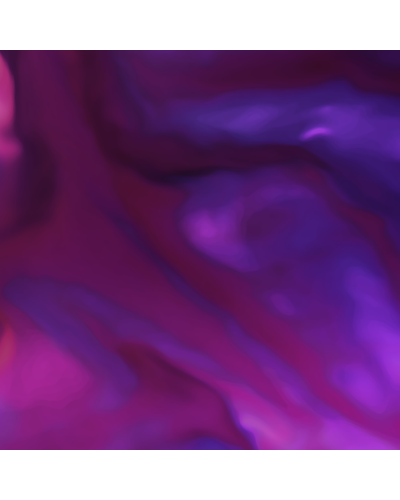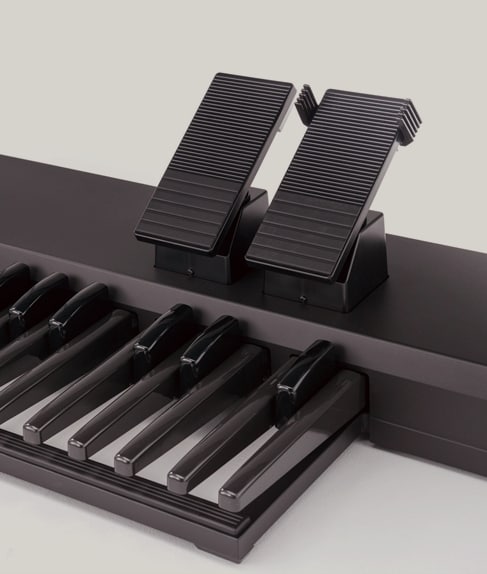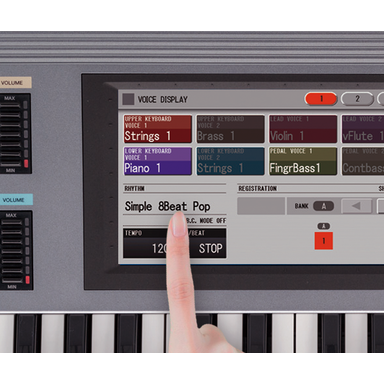RSP RM59,990 (West Malaysia) RSP RM62,990 (East Malaysia)
For players wanting to get the most out of the expressive capabilities of the STAGEA.
-
ELS-02C ELECTONE
For players who want to get the most out of the expressive capabilities of the STAGEA
A custom model equipped with functions that augment creativity and encourage further exploration of musicality.
Yamaha keyboards are the only instruments on Earth that allow players to express the very depths of their souls
In addition to the functions of the standard-model ELS-02, this Electone is the only instrument in the world equipped with custom upper and lower FSV keyboards that can accommodate Horizontal Touch as well as Initial Touch and After Touch, which more faithfully captures the expression of the fingertips. With After Touch on the pedalboard, a VA tone generator and Organ Flute voices, and a second expression pedal, players can test the limits of their expression.


A range of functions that enable players to use their whole body to control the music
Players can depress the second expression pedal with their feet to bend pitches smoothly, and adjust the tempo of programmed rhythms. The pedal returns to the neutral position when it is released.

VOICE AND RHYTHM
-
AWM Tone Generator
-
Super Articulation Voices
-
Articulation Element Model (AEM) Technology
-
Virtual Acoustic (VA) Tone Generator
-
Layers
-
Organ Flutes
-
Recreate the Full Sound of an Orchestra
-
Effects
-
Voice Link
-
Voice Edit
-
634 types of rhythm patterns
-
Keyboard Percussion
-
The Voice Guide will talk to you and support controlling the Electone

REGISTRATION
KEYBOARD AND CONTROL
DESIGN
SPEAKER
Features
An improved and superbly expressive STAGEA
Generating all the sounds of the world
AWM Tone Generator
The Advanced Wave Memory (AWM) tone generator incorporates 986 voices. A wide variety of high quality sounds have been sampled, including not only wind and string instruments, but folk instruments, choral voices and many others, offering a rich range of expressiveness. Piano sounds incorporate the full, deep tones of the CFX full concert grand piano, the crowning glory of the Yamaha piano line
Super Articulation Voices
Super Articulation Voices have been included which realistically reproduce the characteristic techniques used in playing wind, string, and other acoustic instruments, according to keyboard touch and playing style.
Articulation Element Model (AEM) Technology
AEM is Yamaha’s proprietary tone generation technology. AEM selects, in real time, the optimal sampled data for the piece being performed, recreating the smooth, natural sounds of acoustical instruments. AEM is used in some of the Super Articulation Voices.
Layers
A single tone can be produced by layering up to eight different wave types. This not only adds depth to the sound, but with variations in length and touch, can provide a wide range of expressions.
Virtual Acoustic (VA) Tone Generator
This tone generator simulates how sound is generated inside an instrument, creating a virtual instrument with which to synthesize sounds. This not only makes it possible to express the shifts in tone characteristic of acoustic instruments, but also to create entirely imaginary instruments.
Organ Flutes
This feature makes it possible to create a gorgeous, full organ sound. There are three types to choose from (Sine, Vintage, and Euro), with Vibrato, Rotary Speaker, and other classic organ effects that can also be adjusted by the player.
Recreate the Full Sound of an Orchestra
The three keyboards can sound up to eight types of tones simultaneously, enabling the player to recreate the rich, heavy sound of an orchestra.
Effects
Adding delay, distortion and other effects brings out a whole new range of expressive possibilities. The ELS-02/02C includes a wide variety of effects, with 16 categories and 308 types offering the player the freedom to combine effects and make detailed adjustments.
Voice Link
Voice Condition settings for each Voice can be registered in “Voice Link” and displayed on a single screen, where they can be called up for each of the Voice Sections. Because Condition settings are also linked, there is no need to repeatedly copy settings for each Section, making the registration process much faster.
Voice Edit
The Voice Edit feature makes it possible to change the tone and volume of each Voice, enabling the player to create original Voices.
Note: Super Articulation Voices cannot be edited.
Diverse rhythms bring the world’s music closer.
634 types of rhythm patterns.
Preset, realistic rhythm patterns have been sampled from actual percussion instruments. From standard patterns to those reflecting today’s musical styles, the Electone offers a diversity of rhythm patterns that work with music from around the world.
The Rhythm Program lets the player edit existing patterns as well as create entirely original patterns.
Note: Some preset patterns cannot be edited.
Keyboard Percussion
A wide variety of percussion sounds and effects can be called up from the keyboards, making it possible to play percussion sounds from the Upper and Lower keyboards and Pedalboard. 40 sets per Unit are available for users to decide which sounds they wish to assign to each keyboard. Up to two sets can be used simultaneously.
Recreate a wide variety of musical styles.
Registration
Voice, rhythm and other settings made using the Electone’s front panel or display are called “Registrations.”
A wide range of combinations can be called up instantly using a single button, with five Registration Banks each consisting of 16 memories available, enabling the user to store a maximum of 80 (16 x 5) original Registrations.
Smoothly switch between Registrations using the Registration Memory buttons, the footswitch, or the Registration Sequence.
Additional Units can be stored as needed.
Registration Menu
Select and call up Registrations by musical genre for immediate, realistic performance. The Custom model offers 566 varieties to choose from, while the Standard model includes 506 menu selections. "Simple Registrations" can be used for improvisation, or to supply basic components when creating original Registrations.
Data from the ELS-01 series can be used as well.
Data created or purchased for the ELS-01 series can also be used with the ELS-02 series. Voices and Rhythms from the ELS-01 series are included in the ELS-02 under the same names (some numbers may have been added or other slight changes made).
Note: Data for Drum and Percussion pitches set high may not reproduce at the same pitch.
Note: Sound transitions are now more natural for Lead Voice timbres when playing Legato or using the Slide function.
Note: Because of faster data reading speeds, some data may require adjustment.
Two purpose-based recording functions.
The audio recording function is handy when you want to play your music on the computer or record it onto a CD. The MDR recording function enables recording of keyboard playing by parts, as well as altering the tone and re-recording selected sections of the initial recording.
Note: Please use the USB flash drives noted on the list of drives whose performance have been verified by Yamaha. For more details, please visit your local Yamaha website.
Only Yamaha could create a keyboard this sensitive to the player.
Custom (FSV) Keyboard
The Custom model is equipped with this keyboard. In addition to Initial and After Touch features, Pitch can be varied using Horizontal Touch. Sensors detect lateral changes in stroke in increments of 0.1mm, with 127 levels of resolution that enable a range of delicate expressiveness. Only Yamaha offers a custom keyboard with this feature.
Pedalboard
In addition to Initial Touch features, the Pedalboard also enables legato and polyphonic play.
A Wide Range of Features for Full Body Control.
Expression Pedal (Right)
This pedal is used to control overall volume and add expressiveness to the music. Assigning a variety of functions to the left and right Footswitches gives the player effective, real-time control over their performance. They can also be used to switch between Registrations and to control rhythm.
2nd Expression Pedal (Left)
This pedal can be used to control Pitch Bend, which creates smoother pitch transitions, and to change Rhythm tempos. The pedal is designed to return to the middle position when the foot is released.
Knee Lever
This lever is operated using the right
knee. It can be used to control the Sustain effect, or to switch the Upper Keyboard between solo and Melody on Chord play. The lever can be folded away when not in use.
Optimized for Player Movement, With Playability the Goal.
Buttons
Buttons are all easy to press, and are carefully arranged to allow the player to concentrate on the performance.
Form
The frame is constructed to ensure pedal play is visible from any direction. The entire instrument is angled forward toward the player, creating a more dynamic appearance for the listener.
Large LCD Touch Panel
A large, 7-inch LCD touch panel is easily visible from the player’s position.
Combining it with the data control dial immediately adjacent enables intuitive operation of the controls.
Coloring
Tones of white, black and silver create an impression of intrepid strength. The coloring not only works well with any home interior, but builds even greater excitement for a player on stage.
Accurate sound, delivered to both player and audience.
Main Speaker
Speaker unit is located under the keyboard, and represents the culmination of sophisticated Yamaha sound technology. The Custom model features a stereo speaker located on the back that can be turned on and off, providing an even greater breadth of sound.
Monitor Speaker
Located to the left and right above the panel. Supplements the stereo effect of the main speakers for the person playing.
The Voice Guide will talk to you and support controlling the Electone
When Voice Guide is active, the Electone speaks information from the current display or operation being executed. This allows those who have visual impairments to enjoy playing and using the instrument.
Note:
*When using Voice Guide, make sure that the USB flash memory containing the Voice Guide files is connected to the instrument.
*The audible information of the functions/screen supported by the Voice Guide is limited.
*The Voice Guide file is common for ELS-02/02C and ELC-02.
Accessories
* Specifications are subject to change without notice. The colors and finishes shown may vary from those on the actual products.














































